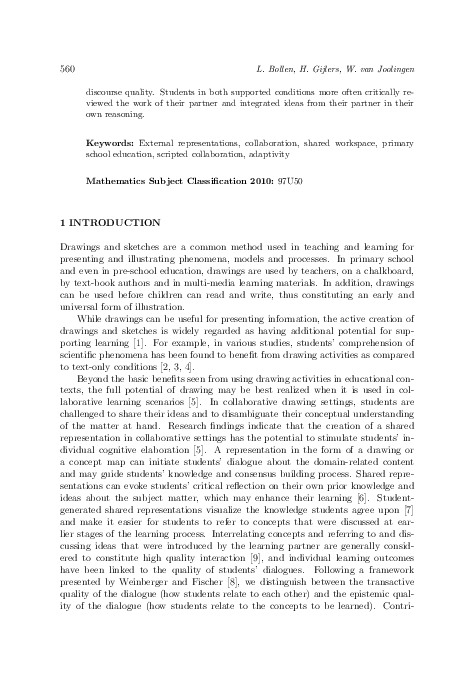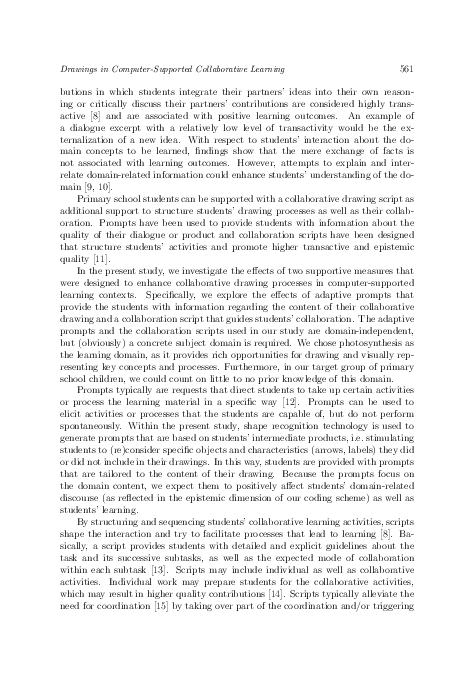Drawings in Computer-Supported Collaborative Learning -- Empirical and Technical Results
keywords: External representations, collaboration, shared workspace, primary school education, scripted collaboration, adaptivity
Self-constructed external representations are thought to be beneficial in teaching and learning, especially when embedded in peer interactions, and can positively affect the course and type of reasoning, for example by providing grounding for explanations and self-explanations, by helping to disambiguate students' mental models of phenomena, or by increasing and sharing the task focus. This paper reports on the results of research efforts investigating which conditions are advantageous in collaborative drawing activities in computer-supported learning scenarios for young students. We describe the design, technical implementation and empirical results of a study with 94 primary school students working on a collaborative drawing task in various conditions that include adaptive prompting and scripted activities. Results showed, partially in line with our expectations, that adaptive prompting as well as scripting positively affected students' learning outcomes and discourse quality. Students in both supported conditions more often critically reviewed the work of their partner and integrated ideas from their partner in their own reasoning.
mathematics subject classification 2000: 97U50
reference: Vol. 34, 2015, No. 3, pp. 559–587


